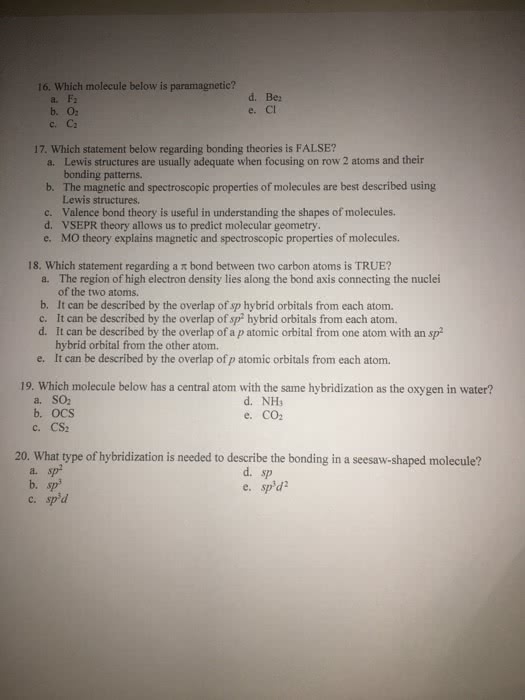CH 101 Study Guide - Final Guide: Orbital Hybridisation, Lewis Structure, Metallic Bonding
Document Summary
Oxygen is paramagnetic: paramagnetic material has unpaired electrons, neither lewis theory nor valence bond theory predict this result. Lewis theory generally predicts trends in properties, but it does not give good numerical predictions. Lewis theory gives good first approximations of the bond angles in molecules, but it usually cannot be used to get the actual angle. Lewis theory cannot write one correct structure for many molecules where resonance is important. Lewis theory often does not predict the correct magnetic behavior of molecules. Valence bond theory: the valence electrons of the atoms in a molecule reside in quantum-mechanical atomic orbitals. According to valence bond theory, bonding takes place between atoms when their atomic or hybrid orbitals interact: to interact, the orbitals must do either of the following: Be aligned along the axis between the atoms. Be parallel to each other and perpendicular to the interatomic axis.


